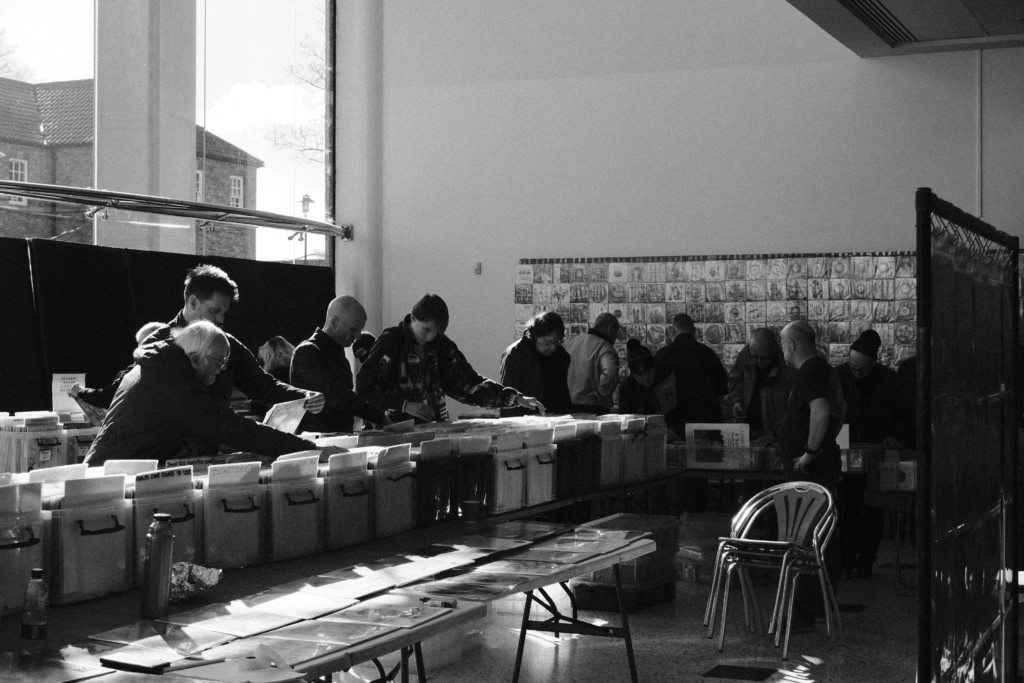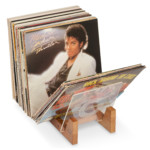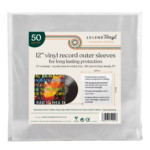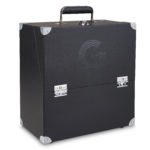Vinyl enthusiasts can go their whole lives without really asking or receiving lucid answers to the question of how does vinyl work. And that’s all well and good, not all questions need answering, just as all answers do not need questions. But you are curious and thus have found your way here, either inadvertently or of your own accord.
Today, we will help you, curious and humble reader, to understand how does vinyl work and where does it come from and for who exactly?

The Difficulty of Making Vinyl
Because the world of vinyl discs and playback is such an inherently physical medium which relies on the following of grooves with a needle tipped stylus, the resulting frequency range is rather reduced, a fact made especially evident if compared to digital recording technologies such as the Compact Disc.
If, for example, you have ever had external vibrations bump your stylus from its journey along the grooves of a disc, then you will have at least some idea of the effect that more intense frequencies might have on this stylus if not properly groomed and heeded in the mastering process, and especially if we do not ask ourselves how does vinyl work.
There is more than just this physicality to think about, for the grooves are inherently smaller towards the centre of the disc, owing to the circular shape. On the outside of a 12 inch record, for example, the needle moves at around 20 inches per second, whereas on the inside it moves at around 8 1/2 inches per second.
Smaller grooves go hand in hand with a reduction in audio fidelity, all of which the mastering engineer will need to take into account. Sometimes, even the artist and producer (and whoever else, come to think of it) are forced to choose a song order with this in mind, knowing that those on the inner grooves of the disc won’t sound as clear nor crisp as those on the outer edges.
A Physical Medium
Again owing to the sheer physical of the format, the amount of music that a polyvinyl disc can hold is finite, much like Compact Discs for that matter, so the question how does vinyl work is not exactly exclusive.
The stylus will, no matter what, reach an end of sorts and will thus require you, the listener, to either flip the disc and / or pause and reflect on what you just heard, or simply get on with your life altogether.
Regardless of what the listener decides to do once the record is over, the artist and producer will need to consider this all important time factor when curating the song order and deciding just which songs will go on which side of the discs in question, with a lenience towards splitting the tracklist down the middle (though it is not always so simple).
Mastering
Similarly, and to elaborate on some points alluded to above, the dynamic range of a vinyl disc is also considerably narrower than that of a digital recording, regardless of where and on what you might be consuming said digital recording.
A record that is mastered too loud for vinyl will sound distorted, and similarly a record mastered with too many large dynamic crescendos in one spot will skip and cause the stylus and needle to jump as though shocked out of their wits. The louder a record is, the deeper its grooves need to be to represent and contain the volume carved within, meaning, if this is the case, that there will inherently be less space on each side of the record.
It is the job of a mastering engineer to consider all of these things duly, before, during, and after the process of mastering specifically for vinyl.
What are Vinyl Records? and How Does Vinyl Work?
Vinyl records are precisely what they say on the tin: music performances recorded and captured and subsequently pressed onto vinyl discs for the consumption of whoever chooses to spend their hard earned money on it, or for those who simply wish to spend their much malformed attention spans listening.
The vinyl discs are made from a crude oil polymer called polyvinyl chloride which is heated to the point where it is malleable enough to be pressed with whatever is up for printing. This crude oil polymer tends to be pressed in with a master disc, which has been printed itself from a master tape or digital recording which will hopefully have been mastered with specific purpose of being pressed to vinyl.
Vinyl recording is, as already elucidated, such an imperfect and backwards medium that there are several allowances and factors that must be taken into account when mastering and mixing a song for this specific purpose, for the vinyl disc.
Once the record has been printed via the means breezed over above, it is then placed in the hands of the consumer who usually seeks to have it on their turntable as soon as possible. Spinning, it will connect with the stylus, which will transmit all of the various details and climate sensitive data from within the microscopic and minute grooves into sound through the stereo system and speakers.
Vibrations are the key and are the reason that any sound is possible in the first place. Music is simply our relationship with these sounds and how our own ears and minds and souls interpret them for our own. The needle will pick up these vibrations inherently embedded in the grooves and turn them into sound amplified for us.
This ought to sound rather crazy, and yet this used to be the main currency for music fans, the way that almost all music fans enjoyed and consumed their music at home or in clubs. Despite being superseded by supposedly more superior technologies such as the Compact Disc, we are still here asking, how does vinyl work?
What is Vinyl Made From?
Surely if we are to know what vinyl and if we persist in our asking how does vinyl work, then we must first know from what material they are made and where exactly they come from.
The vital material, polyvinyl chloride, is produced through the combination of crude oil and chlorine, a simple answer to how does vinyl work. If you were not already aware, it is precisely crude oils in forms like this that are extremely bad for the environment, and a new vinyl boom is threatening an already teetering environmental situation so that it is almost on the brink.
Even if you do not own any such records yourself, you might at present be in the vicinity of something made from polyvinyl chloride, even if you have not heard of it in this guise before. A lot of plumbing parts, for example, as well as other things around the house (and elsewhere) are made with the very same material, though it is far more often referred to and abbreviated as PVC. You might recognise it more in this form.
In its original form, polyvinyl chloride will appear, in its natural state, more or less completely clear, which makes for delightful opportunities for experimental color combinations, if indeed you have paid attention to any Record Store Day releases of late.
You will, however, almost certainly have noticed that the most common color for vinyl records is still a resounding black, which is likely to be for financial reasons, to save record producers and pressing plants precious coin throughout the process, with the color black being cheaper than most other alternatives in the market, and far less complex than the varied color combinations that float around these days.
Still, there are endless possibilities with regards to coloring records, and you are just as likely to find these flying flags on reissued past releases as on newer releases. It seems to me quite common, in fact, for reissues of albums to feature colored discs remastered from original tape copies, pressed onto a related color to the cover of the album or the band in question.
This can fuel a great experience for the collector within us all, and can even function as a way to abuse your fanbase just that bit more. The industrial hip hop group Death Grips, for instance, are known for having a more than sadistic relationship with their fanbase, even in some cases going as far as printing their records on to clear vinyl, thus making it near impossible to play a specific song from the middle of the album as it is incredibly difficult to see where one song ends and another begins unless viewing the disc in a certain light.
Record Players Today
It is very easy to forget that, once, our listening experience on record players (in those days gramophones) was governed by kinetic energy, relying on a hand turned crank to get started and keep going. This sounds good in theory, especially as it negates the use of external sources of electricity, but can prove disastrous in the long run.
The kinetic crank could and would fall easily into disrepair, coming up against the muscle of the consumer inherently considering its purpose. This was a far from apposte listening environment either, for the energy produced could very easily run out in the middle of a recording, requiring the user to crank up again.
Whatever was left of a holistic listening experience salvaged through the less than adequate sound quality amidst the various distortions and crackles would have been left to ruin. Not only did this have an effect on the righteousness of the listening experience, but could also affect the disc itself, in which case the sharp needle would lie at a point in the record that it otherwise should not, leading the already low fidelity to be pockmarked further by the very device that is meant to play it!
It should not be difficult to see why this kinetic crank was superseded. Though certainly not as strong nor as omnipotent as today, the flow and current of electricity was still far more reliable than the manually pumped kinetic crank of the gramophone, providing a more holistic listening experience.
Listeners could simply place the stylus on the edge of the record and let the electricity work its invisible magic. More automation, an automatic motor, electricity needed, to fan the flames. The reliability of electricity also meant that more external gear could get involved, meaning more audiophilic equipment could improve the listening experience entirely.
How Does Vinyl Work? And What Kinds of Vinyl Record?
In thinking about how does vinyl work, we will undoubtedly come across the topic of further grading and compartmentalising the vinyl record. Thus, there are several different types of disc, though these can broadly be pinned down into two main categories: the size of the record in question; and the speed at which it is played back so as to as accurately as possible represent the sounds as they were recorded, mixed, produced, and mastered onto vinyl.
Size
Though there is undoubtedly a plethora of different sizes that vinyl records can appear, though we only really be dealing the three main sizes that you are likely to come across in the western world today.
12 Inch Records
12 inch records will more likely than not be holding a recording of an album, with one half allotted per side of the physical disc usually, though this can very depending on just how long the recording is. These albums will more often than not be played at 33 1 / 3 rpm, which enables more space on the record to contain the music which is being released in this longer and larger format. A 12 inch record is able to hold roughly 15 to 22 minutes of music per side at 33 1 / 3 rpm.
10 Inch Records
10 inch records are one of the less common types of record that you will encounter in your travels, aside from the kind of novelty or limited edition records mentioned previously, and one of those types of records that I can safely say you won’t be seeing as much of as its 12 inch and 7 inch brethren. The 10 inch straddles an interesting line between the two, as there is typically no standard speed at which they are played, allowing for 45 rpm and 33 1 / 3 rpm playback, straddling, too, the line between various shades of fidelity.
7 Inch Records
7 inch records are the smallest of these more common record sizes, the lack in size certainly not translating to an overall lack of presence or potency, as they can be found just about anywhere you can find records of all varieties. 7 inch records are usually played at 45 rpm for the sake of audio fidelity. They are often called singles as they are the perfect size for holding a single song on each side (depending on the length of the songs of course). Their capacity means they are able to hold 4 to 6 minutes on each side, with this run time increasing to around 7 minutes if played at 33 1 / 3 rpm.
Belt Drive or Direct Drive?
What might seem like medium in one piece is in fact a multifaceted piece of kit with many parts, much as the answer to a question like ‘how does vinyl work’ is.
Once dissected, the turntable is an even more magnificent thing, both simple and complex, playing host to a panoply of different, among which two take precedence in the commercial sector. If you were to pop open the hood of any turntable, you would more than likely come across either a belt drive or a direct drive beneath.
Belt drive enthusiasts would be inclined to tell you that the presence of a belt drive made of rubber goes some way to dampening external vibrations, absorbing the minute shocks of vibrations from elsewhere. This can be especially practical if your listening environment isn’t exactly the most holy and even more so if you are constantly hosting visitors who are not as considerate of the sensitive nature of the turntable’s work as they ought to be.
Inversely, a central pull of using a direct drive turntable is the fact that they tend to have a far more accurate control over the speed of the turntable, meaning that speeds will be more consistent for the platter, with the obvious downside of added extra vibrations, lacking a rubber belt of sorts to absorb the external shocks.
Final Tones
So, there you have it! Hopefully this comprehensive answer to the question of how does vinyl work has been of some use to you, either in understanding the world of vinyl before you delve into, or to help you make more sense of a passion of yours that has been burning for some time. Much like the critic who suggests that understanding a piece of art does not negate the abstract punch it can pack, so too I suggest that understanding better how the world of vinyl functions will provide an even greater appreciation of the medium as a whole. Amen.




